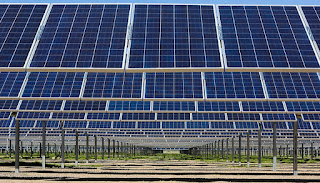… And What it Might Have Missed
Lazard has produced its latest analysis of energy production costs in Lazard’s Levelized Cost of Energy Analysis – Version 11.0. Lazard is one of a small group of organizations whose incomes are dependent on customers who are investors and need the most accurate information possible. If Lazard makes a statement that is widely off solar power in Arizonathe mark, it means that investors will not make the money they feel they should, and in fact they may even lose money. So Lazard has a powerful vested interest in being right. This is what makes its Levelized Cost of Energy (LCOE) information so important.
I have a lot of respect for Lazard. In fact, I think it provides the best information available for most people. Nevertheless, I think they are a little off the mark the LCOE analysis this year. I believe the report is nearly all correct, but there are a few details that I find difficult to reconcile with trends I have been observing in the real world. (Please note the word “few.”)
CleanTechnica’s recent article, Lazard: Wind & Solar Power Costs Continue to Fall, Putting Coal & Nuclear at a Disadvantage, points to a disadvantage for coal and nuclear power. I believe its author, Steve Hanley, was spot on when he said, “The upshot of all this is that operating a coal-fired facility like the Navajo Generating Station in Arizona may be more than the cost of building and operating a solar or wind power installation.”
That is a pretty powerful statement. It means that anyone running a coal-burning plant should take a hard look at replacing it, because there are more economical ways to generate electric power. And the fact is, it is clear that some utilities are doing exactly that. RenewEconomy recently posted an article, Rejected teenagers: the trend of closing young coal plants. That article describes a series of relatively newly built coal-burning power plants, in some cases only two or three years old, that are being scheduled to close.
But I believe Lazard’s LCOE Analysis is too conservative. It does point to a decline in the price of solar and wind power, but it puts that decline at 6% for the year for both. Without doubt, that figure was established by long drudgery, looking at data, and crunching the numbers, but I suspect the actual decline was greater. The report also suggested an illustrative cost of solar power with battery backup at $84 per megawatt-hour (MWh), including a minimum of $36/MWh for the cost of electricity from the battery.
The lowest listed prices for solar power, including subsides, are in the neighborhood of $36/MWh. Based on those figures, I would expect subsidized utility-scale solar power, with battery backup, to cost at least $71/MWh. But these figures appear to be far too high, compared with announced prices for power purchase agreements (PPAs).
The CleanTechnica article, New Solar Price Record: Tucson Utility Inks Deal For Solar Power That Costs Less Than 3 Cents Per Kilowatt-Hour! is an example of much lower prices, which Lazard clearly did not take into account. The cost of solar power in a 100-MW PPA was below $30/MWh, which is below the minimum subsidized price given by Lazard. The system has what NextEra called a “long duration battery storage system” built in, and the article puts the total cost of electricity at $40/MWh to $50/MWh, though the exact price was not announced.
This means the cost of electricity from this system, with battery backup, is at most about 70% of the price suggested in Lazard’s LCOE analysis, and possibly less. Their analysis is tricky, of course, because it represents averages for a year that ends before the article is published. The problem is that prices for some things, including solar systems and batteries, are possibly completely obsolete if they are a year old, but Lazard’s Levelized Cost of Storage is already nearly a year old. Clearly, information on the LCOE should always be taken with a grain of salt, unless you have a clear knowledge of current trends.
The prices of batteries seem to be falling more rapidly than the LCOE Analysis would suggest. As they do, they are likely to drive increased sales of solar and wind systems. And according to Wright’s Law, as more are installed, efficiencies increase and the prices of the systems could be expected to continue to fall.
Coal-burning power plants are exposed to low-cost solar and wind power, but they are not alone. We have seen failures of attempts to finish nuclear plants that are under construction. We have seen failures of nuclear plants that are operating to make money without subsidies. We have also seen a decline in the number of plants being built that are fueled by natural gas. We have seen a trend of declines in the amounts of electricity produced by gas-burning plants; it has lasted about a year, and the average decline is about 12%.
I believe we have to be prepared for not just rapidly falling costs for renewable energy, but also rapidly increasing costs of coal and petroleum products. This could happen if demand for those products drops faster than the supply, because with decreasing sales, the efficiency of production facilities will decline, increasing costs.
Read more at Lazard’s Latest Levelized Cost of Energy Analysis — Good, But a Bit Off? - by George Harvey

No comments:
Post a Comment